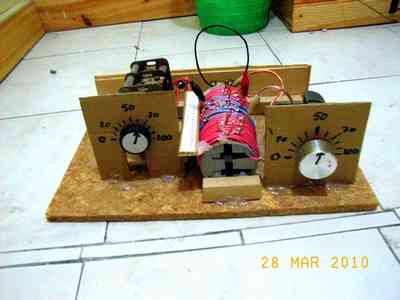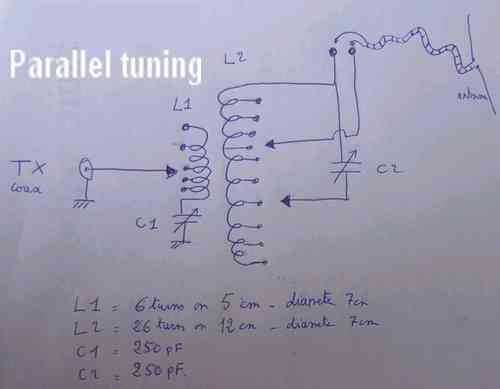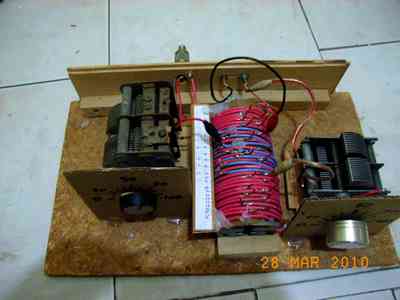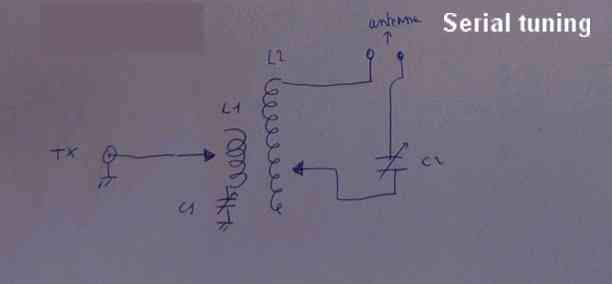ANTENNA TUNER

ANTENNA TUNER |  |
| You
do not need to invest huge amount of money to give to your Atlas the
antenna tuner it needs .With junk components gathered in your
prefer flea market it will cost you almost nothing to get a tuner being
able to make your Atlas210 happy whatever antenna you have .All you
need is a coil and 2 variable condensators and 3 aligator clips .This
tuner is able to get a low SWR from 3.5 to 21 mhz
with load ranging from 10 ohm up to 2000 ohm being either
capacitive or reactive .With this tuner and a dipole 2x 10 meters
connected to a ladder line you will be able to work on all amateur band from 3.5 up to 21 mhz band The schematic is shown herewith .The ATLAS is connected to coil L1 using standard coax cable .The ladder line antenna is connected to L2 .Physical dimensions are given on the drawing .None are critical .Depending on the capactiors values you can change the number of turns and/or the diameter of the loop .The loop is made of standard electric wire (2.5 mm2 section) |  |
 | If you want to give to this equipment a nice "amateur touch" you can simply glue all components on a plate of wood .This is an easier way than to put it in a metal cabinet which is generally common practice . As shown you can use BCL capacitors for C1 and C2 .If each have double sections you can use 1 of the 2 or put the 2 in parallel or the 2 in series .Of course the value of the resulting capacitance is not the same for these different configurations .The maximum power which can be handle by this tuner depend on a large extend of the maximum voltage that the C2 capacitor is able to handle before arcing .Event with BCL capacitors it is possible to get the full power of ATLAS into the tuner as long as the antenna impedance is not too low (more than 10 ohms) The adjustement is quite straightforward . With the antenna connected you will have to find the positions of the 3 aligator clips giving the lowest SWR in the coax line between the ATLAS and the tuner ,by adjusting the 2 variables capacitors .Of course it is a good practice to start at low power (i.e around 10 watts) to prevent problem with the PA of the transceiver .As a rule for the 3.5 mhz band use all L2 for capacitor C2 and half of L1 for tapping the TX .Adjust C1 and C2 for lowest SWR .If not perfect move first the antenna tab on L1 and/or TX tab on L1 .For the other bands you reduce the number of turns of L2 in the same ratio as the frequency .Initial tuning can be done using a dummy load .It is not necessary that this one is pureley resistive .You can use for example ligthing bulbs : for example a 100 watts 220 volts can do the job .To have an idea of the real impedance seen by the tuner at the end of the ladder line for the various band you want to operate is is a good idea to calculate it using various package available like for example MMANA (freeware) .Wiht a little practice it does not take more than 30 seconds to perfectly match the antenna to the ATLAS . |
| In some case especially when the impedance is low it is better to tune the L2 coil not in parallel as show above but in serie as shown here . |  |